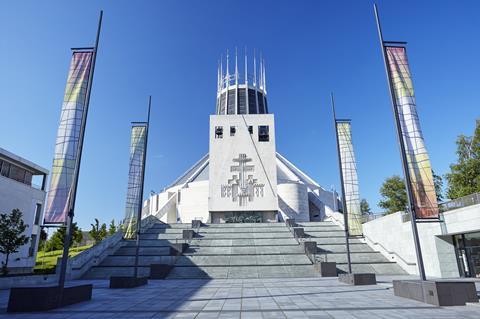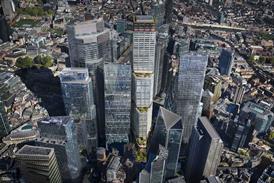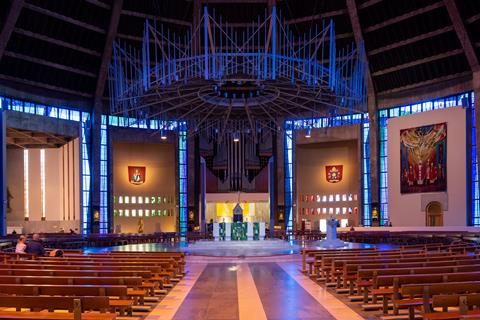Historic England recognises significance of the 1960s modernist landmark

Liverpool’s Metropolitan Cathedral of Christ the King, designed by Frederick Gibberd and completed in 1967, has been elevated from Grade II to Grade I listed status by the Department for Culture, Media and Sport, following advice from Historic England.
The listing upgrade formally recognises the building as of exceptional architectural and historic interest. The cathedral is considered an internationally significant example of liturgical reform and modernist ecclesiastical design, and was the largest Roman Catholic commission of its kind in post-war Britain.
It was constructed over the crypt designed by Sir Edwin Lutyens, part of an earlier classical scheme for a vast cathedral intended to rival St Peter’s in Rome. Begun in the 1930s, construction of Lutyens’s scheme was halted due to financial constraints and the outbreak of the Second World War.
The listing raises Liverpool Metropolitan Cathedral to the same protected status as the grade I-listed Liverpool Cathedral, which was designed by Giles Gilbert Scott and completed in 1980.
Catherine Croft, director of the Twentieth Century Society, said: “Liverpool now rightly has two magnificent Grade I listed cathedrals which together demonstrate just how varied, exciting, and emotionally uplifting twentieth century architecture can be.”
The cathedral’s circular plan, centred around the altar, reflects the changing priorities of Roman Catholic worship following the Second Vatican Council. A large central lantern, or “corona”, filled with coloured glass by John Piper and Patrick Reyntiens, sits atop a drum supported by radial chapels. The lantern was fabricated using a new epoxy-resin method developed specifically for the building.
Other key design features include doors by William Mitchell, a crucifix by Elisabeth Frink, and glass by Margaret Traherne. The work is described by Historic England as a major collaborative achievement of modern architecture and liturgical art.
Heritage minister Baroness Twycross said the listing “honours Sir Frederick Gibberd’s architectural brilliance and recognises his visionary design, which created a landmark that continues to inspire people”.


















No comments yet